Abstract
Three female human subjects pressed a button for monetary reinforcement in a range of variable-interval schedules specifying different frequencies of reinforcement. On alternate days, responding was also punished (by subtracting money) according to a variable-ratio 34 schedule. In the absence of punishment, rate of responding was an increasing negatively accelerated function of reinforcement frequency; the relationship between response rate and reinforcement frequency conformed to Herrnstein's equation. The effect of the punishment schedule was to suppress responding at all frequencies of reinforcement. This was reflected in a change in the values of both constants in Herrnstein's equation: the value of the theoretical maximum response-rate parameter was reduced, while the parameter describing the reinforcement frequency corresponding to the half-maximal response rate was increased.
Keywords: Herrnstein's equation, response rate, reinforcement frequency, variable-interval, variable-ratio punishment, button pressing, humans
Full text
PDF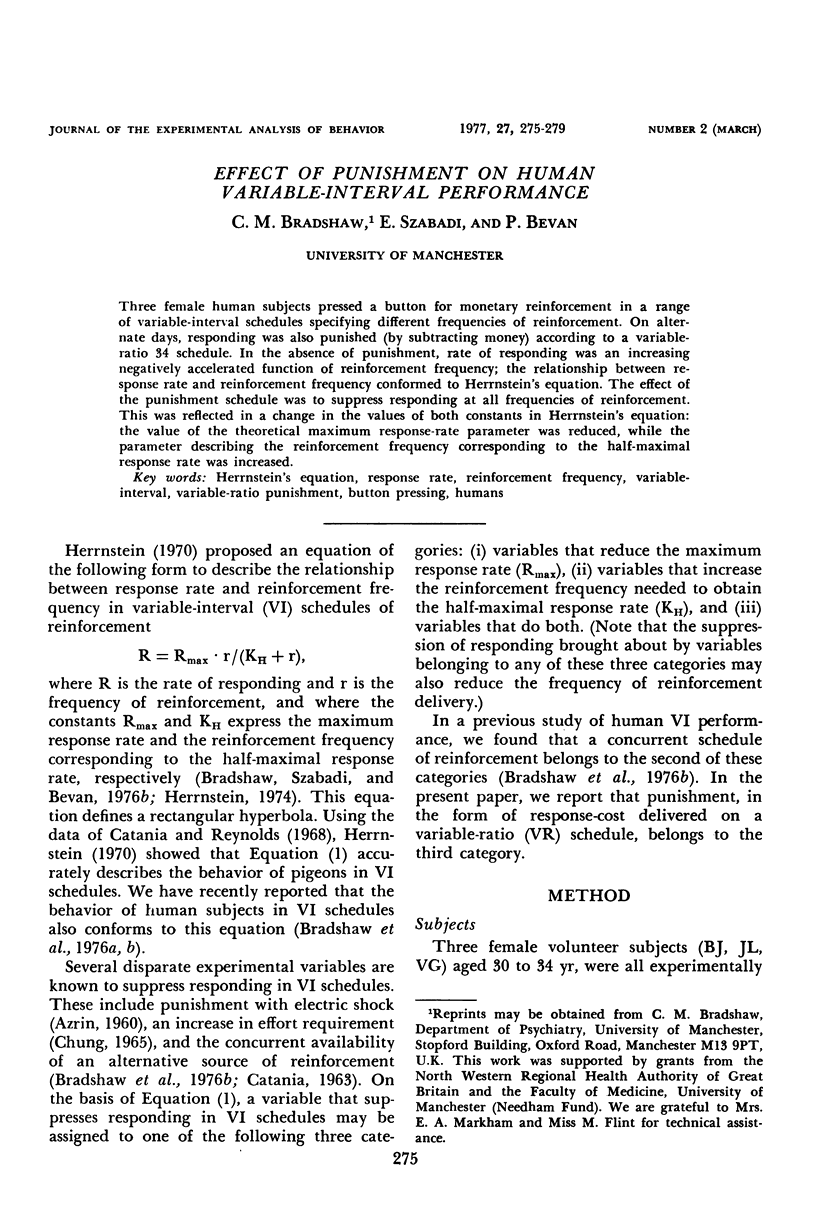
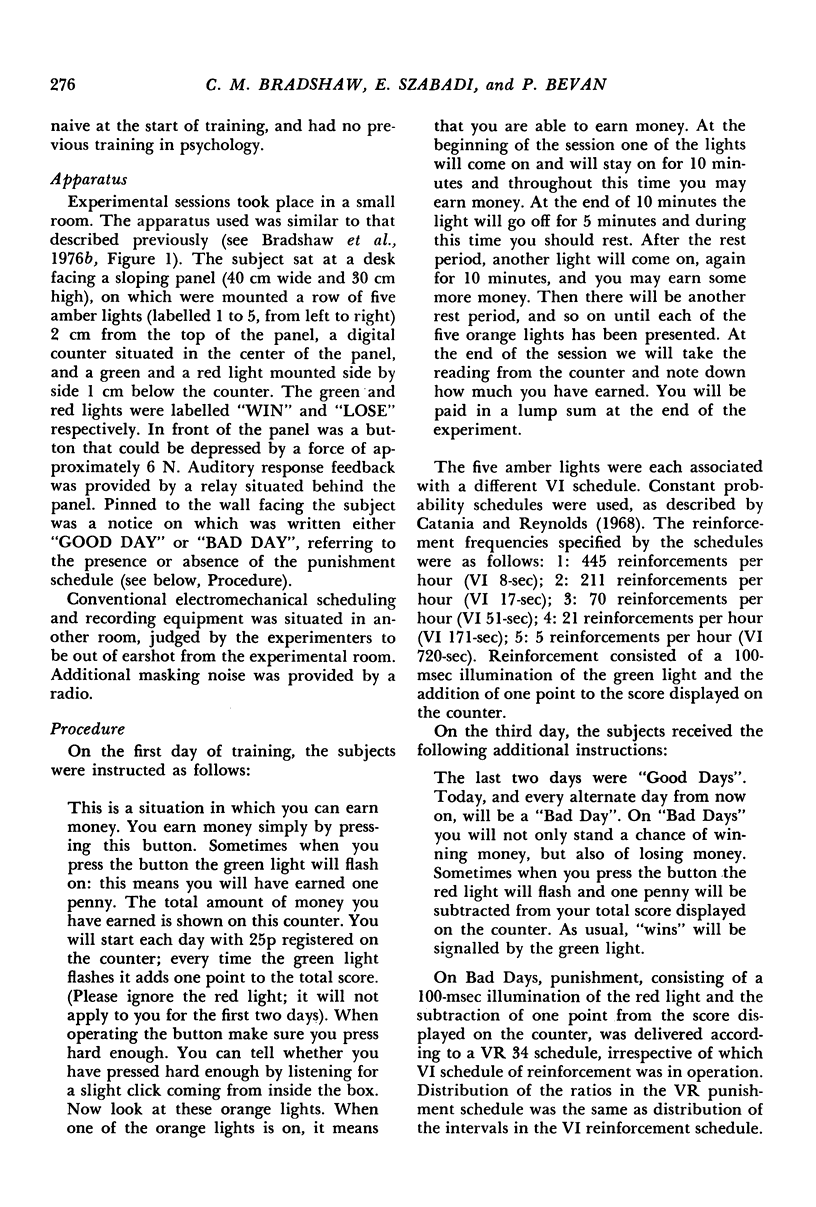
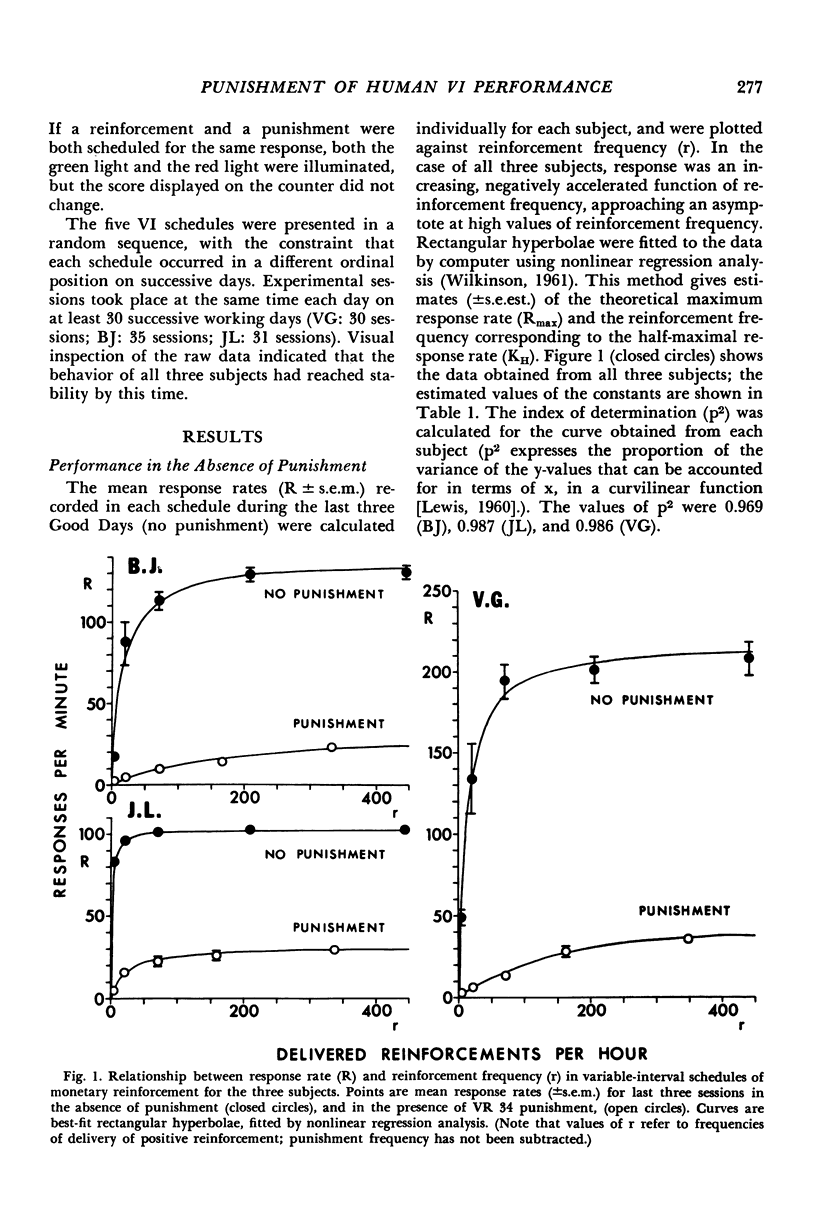
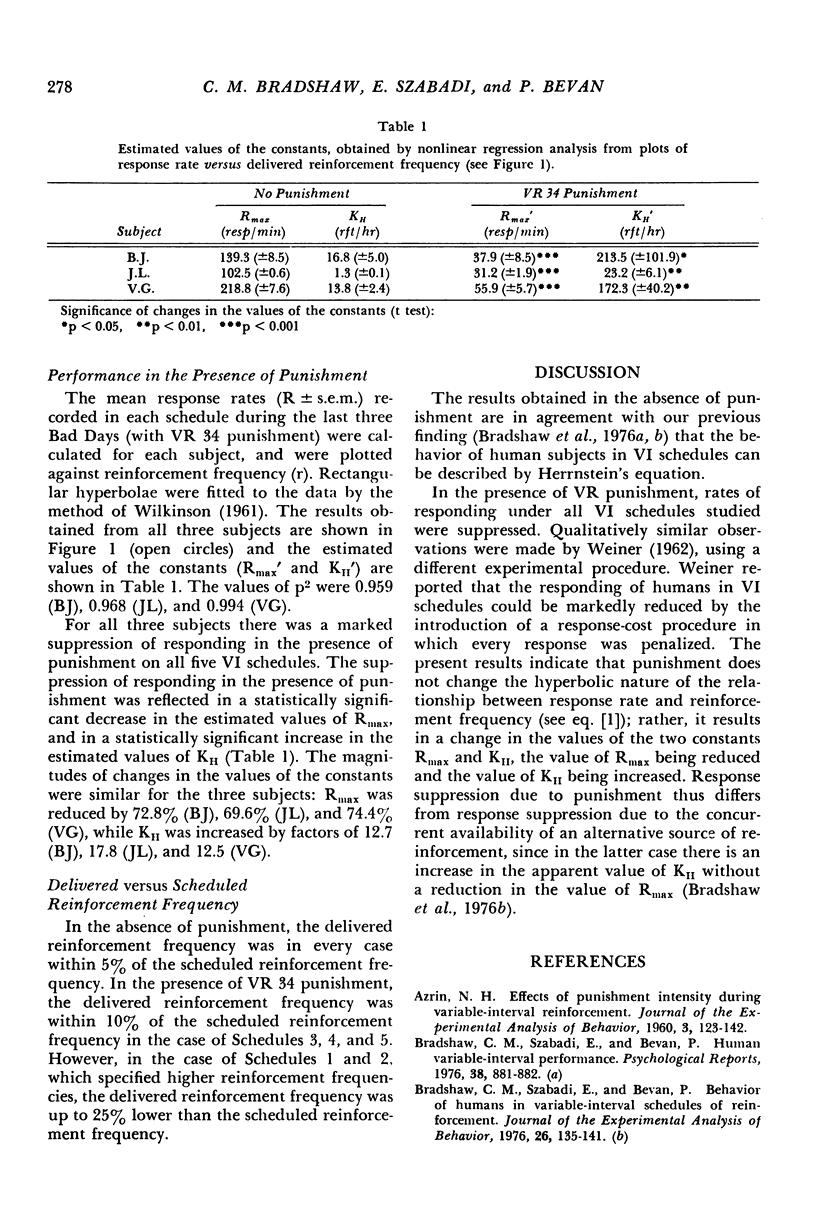
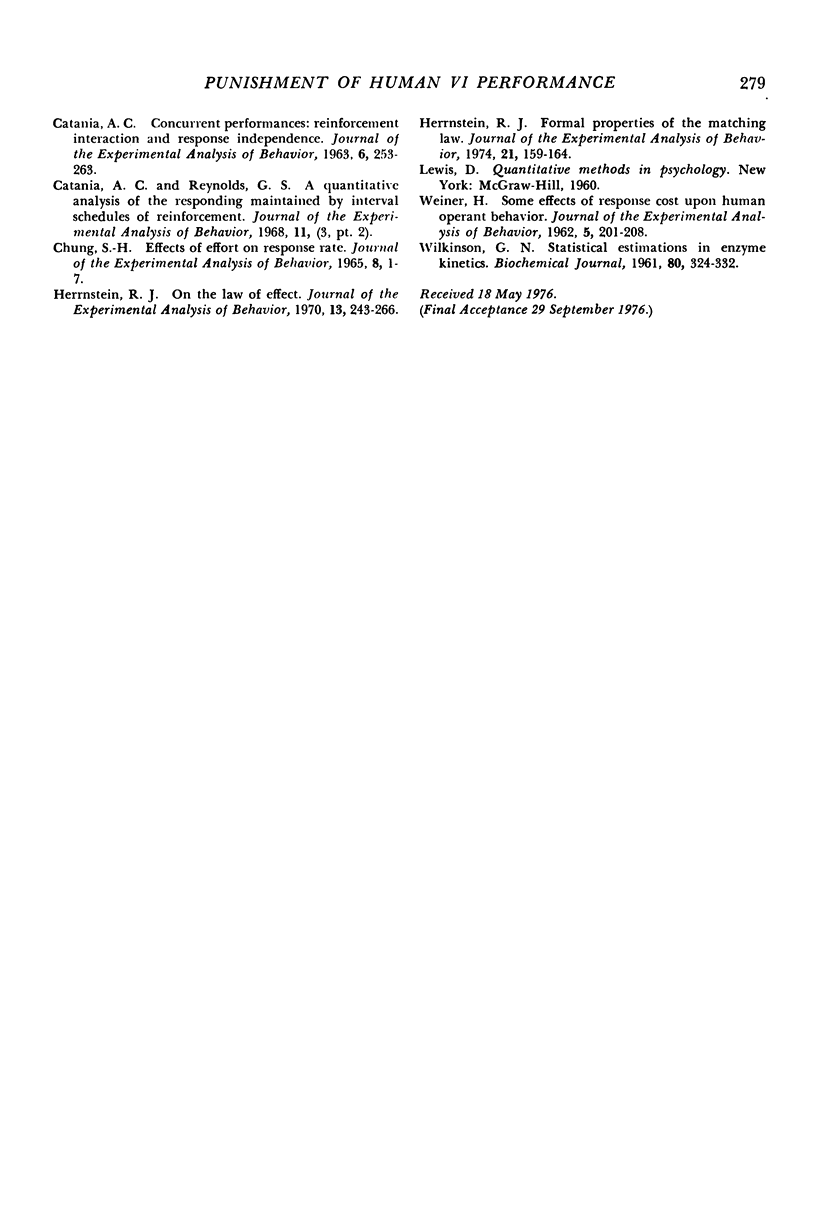
Selected References
These references are in PubMed. This may not be the complete list of references from this article.
- AZRIN N. H. Effects of punishment intensity during variable-interval reinforcement. J Exp Anal Behav. 1960 Apr;3:123–142. doi: 10.1901/jeab.1960.3-123. [DOI] [PMC free article] [PubMed] [Google Scholar]
- Bradshaw C. M., Szabadi E., Bevan P. Behavior of humans in variable-interval schedules of reinforcement. J Exp Anal Behav. 1976 Sep;26(2):135–141. doi: 10.1901/jeab.1976.26-135. [DOI] [PMC free article] [PubMed] [Google Scholar]
- Bradshaw C. M., Szabadi E., Bevan P. Human variable--interval performance. Psychol Rep. 1976 Jun;38(3 Pt 1):881–882. doi: 10.2466/pr0.1976.38.3.881. [DOI] [PubMed] [Google Scholar]
- CATANIA A. C. Concurrent performances: reinforcement interaction and response independence. J Exp Anal Behav. 1963 Apr;6:253–263. doi: 10.1901/jeab.1963.6-253. [DOI] [PMC free article] [PubMed] [Google Scholar]
- Herrnstein R. J. Formal properties of the matching law. J Exp Anal Behav. 1974 Jan;21(1):159–164. doi: 10.1901/jeab.1974.21-159. [DOI] [PMC free article] [PubMed] [Google Scholar]
- Herrnstein R. J. On the law of effect. J Exp Anal Behav. 1970 Mar;13(2):243–266. doi: 10.1901/jeab.1970.13-243. [DOI] [PMC free article] [PubMed] [Google Scholar]
- WEINER H. Some effects of response cost upon human operant behavior. J Exp Anal Behav. 1962 Apr;5:201–208. doi: 10.1901/jeab.1962.5-201. [DOI] [PMC free article] [PubMed] [Google Scholar]
- WILKINSON G. N. Statistical estimations in enzyme kinetics. Biochem J. 1961 Aug;80:324–332. doi: 10.1042/bj0800324. [DOI] [PMC free article] [PubMed] [Google Scholar]


